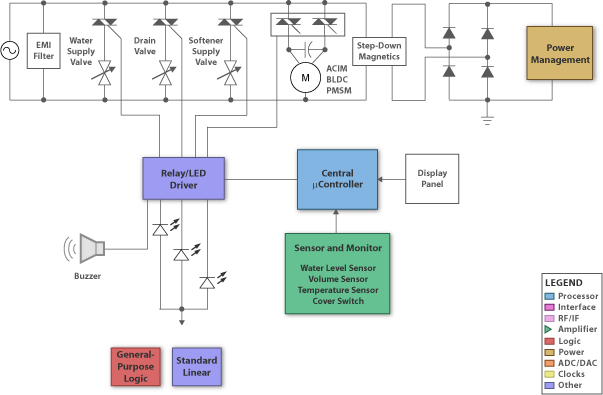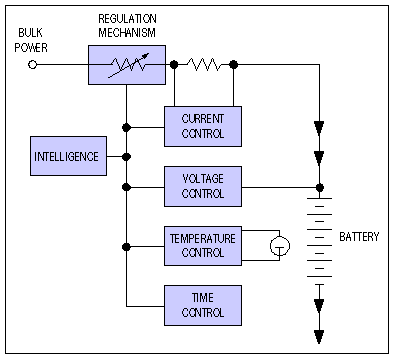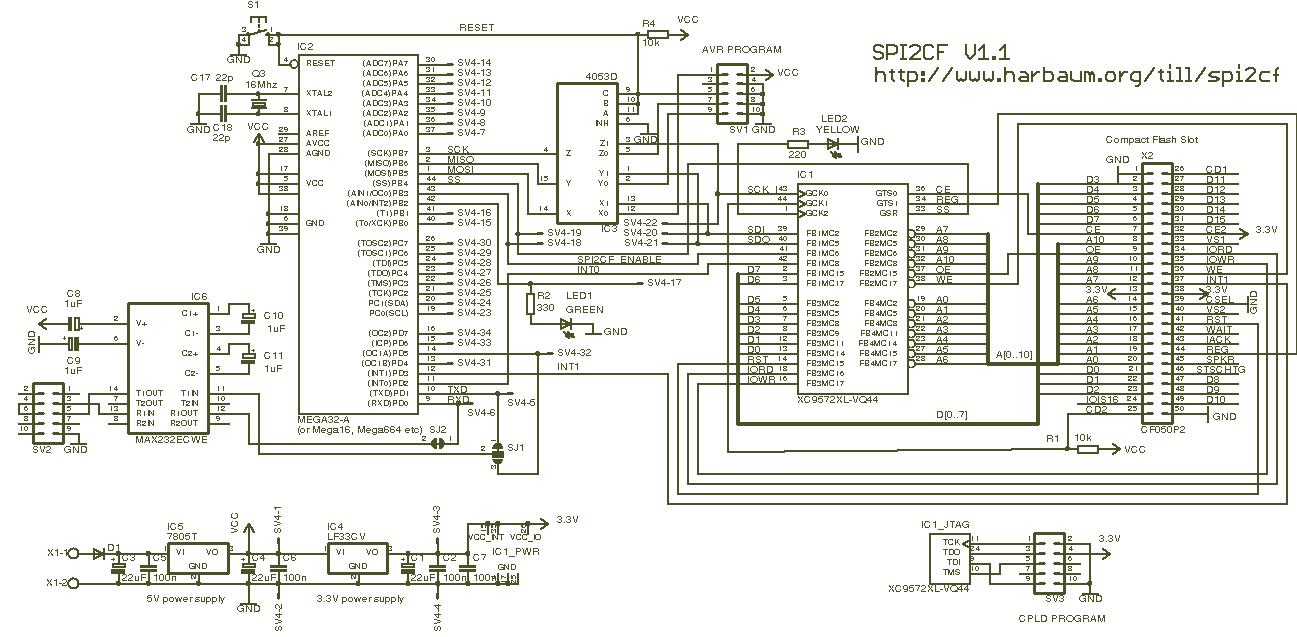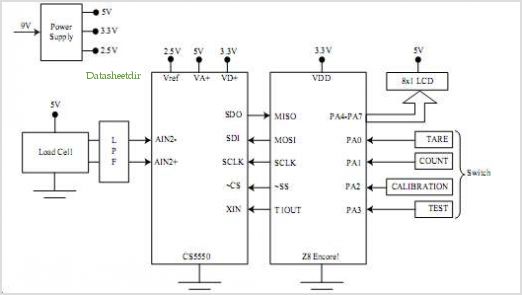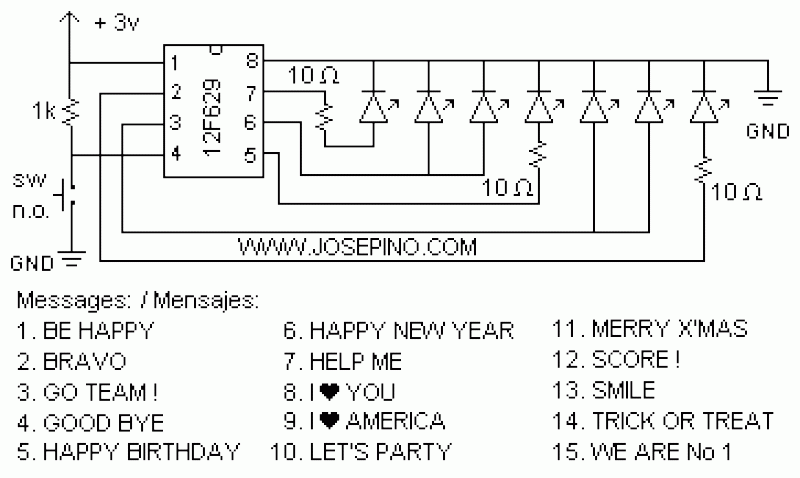
microcontrollers
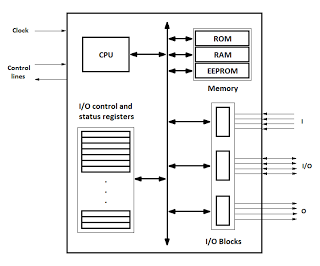
Microcontrollers are integrated circuits that consist of a microprocessor along with additional units such as memory and input/output peripherals. This implementation allows for savings in time, space, and cost. Microcontrollers are commonly abbreviated as MCU (Microcontroller Unit), µC, or uC. They are designed to execute a variety of tasks, enabling their use in numerous devices. The specific function performed by a microcontroller is determined by the program written into it. Their applications range from toys and automobiles to industrial equipment. A microcontroller typically comprises various components, but all include several essential blocks necessary for proper operation. A typical block diagram of a microcontroller, illustrating its basic components, includes the Central Processing Unit (CPU), which serves as the core of the microcontroller. The CPU connects the other units of the MCU and coordinates their operations. The primary functions of the CPU involve three phases: fetching, decoding, and executing instructions. The program stored in the MCU consists of coded programming instructions, and the CPU's task is to fetch the current instruction, decode it, and then execute it. The execution of the program involves processing these instructions sequentially. Additionally, the CPU facilitates arithmetic and logical operations, data reading and writing to memory, and data transfer between peripheral components and memory. The Arithmetic Logic Unit (ALU) handles the arithmetic and logical operations and data transfers. The memory of the MCU includes both data (working) memory and program memory. Each memory type is divided into segments known as memory locations, each with a unique address, which the CPU recognizes. The bus serves as the link between the CPU and the MCU's memory, allowing data transmission. In the context of PIC (Programmable Intelligent Computer) microcontrollers, data memory, also referred to as RAM (Random Access Memory), is utilized by the microcontroller's program during execution, storing all necessary temporary data. Recent developments have seen manufacturers incorporate EEPROM (Electrically Erasable Programmable Read-Only Memory) as a distinct part of data memory, which retains data even when power is off, providing the microcontroller with the ability to store important parameters independently. Program memory is where the microcontroller's program is stored, and modern technology allows for multiple write and erase cycles, enabling the microcontroller to be updated with new or improved programs. It is noteworthy that memory in some microcontrollers can be utilized in various ways; for example, both RAM and EEPROM can store executable code or data.
Microcontrollers are fundamental components in modern electronic devices, serving as the brains that execute pre-defined instructions to control hardware functions. Their architecture typically includes a CPU, memory units, and input/output interfaces. The CPU is responsible for executing instructions that direct the operation of the microcontroller, while the memory units store both the program and the data necessary for execution.
The bus system within the microcontroller facilitates communication between the CPU and the memory, ensuring efficient data transfer. The ALU plays a crucial role in performing calculations and logical operations, which are essential for processing input signals and generating output responses.
Microcontrollers are often employed in applications requiring real-time processing, such as automotive control systems, industrial automation, and consumer electronics. The flexibility of microcontrollers allows for various programming languages and development environments, enabling engineers to tailor solutions to specific requirements.
The integration of EEPROM alongside RAM enhances the functionality of microcontrollers by allowing them to retain critical information even during power loss. This capability is particularly valuable in applications where settings or calibration data must be preserved.
Overall, microcontrollers represent a versatile and cost-effective solution for implementing control systems across a wide array of industries, driving innovation and efficiency in electronic design.Microcontrollers are integrated circuits which consists of microprocessor with additional units like memories, input/output units (peripherals), etc. With this way of implementation, microcontrollers provide savings in time and space, and of course money.
Abbreviated way of marking the microcontrollers is MCU (Microcontroller Unit), µC, or uC. In general, microcontrollers are designed so that they can execute a lot of different tasks, which provides an opportunity for their use in various devices. The function or the task that microcontroller executes depends on the program which is written (recorded) in it.
The application of the microcontrollers is wide, from the toys, cars, industry, etc. In fact, one microcontroller can consists of different components. However, every microcontroller consists of several basic blocks, which are necessary for its normal functioning. Typical block-diagram of a microcontroller with its basic components is shown on the Picture 1. The Central Processing Unit (CPU) is the heart of the microcontroller. The CPU is connecting element between the rest of the units of the MCU and it coordinate their work. The main function of the CPU consists of three phases and these three phases are: catch, decode and execute.
In other words, the program which is written in the MCU consists of programming instructions and the task of the CPU is to find the current instruction (catch), then to decode it, because every programming instruction is coded, and finally, after decoding the instruction (that means that the CPU now knows which instruction is that) CPU needs to execute the instruction. So, the executing of the program which is written in the MCU is nothing else, but executing the programming instructions which the program consists of, successively, one after another.
From the other side, this unit (CPU) allows executing of the arithmetic and logical operations, reading and writing data from and into the memory, data transfer between the peripheral components, and also data transfer between the memory and the peripheral components. For the above mentioned arithmetic and logical operations, and the data transfer, is charge a separate section from the CPU, which is called Arithmetic Logic Unit (ALU).
The memory stores the data which MCU operates with. The MCU have its own data (working) and program memory. Each of the memories is divided on certain parts which are called memory locations, and each of these locations have its own address. The CPU recognizes the certain memory location by its own address. The link which connects the CPU and the memory of the MCU is called bus. Actually, the data is transmitted via the bus. From the aspect of the PIC (Programmable Inteligent Computer) microcontrollers, the data memory, also known as RAM (Random Access Memory), is a memory which is used by the program of the microcontroller during its own execution.
In this memory are stored all temporary data necessary for the program execution. More recently, all manufacturers of microcontrollers have begun to add and EEPROM (Electrically Erasable Programmable Read-Only Memory) memory, as a separate part of the data memory. This memory have the ability to save data even when the power supply is off, which is not the case with the RAM memory.
This way, the microcontroller can store important parameters, so that it declares its independence. The program memory is that memory in which is stored, or written (recorded) the program for the microcontroller. Today`s technology allows more times to write and erase from this memory, allowing one microcontroller to be used with different versions and improvements of the previous recorded programs, or to write in it completely different (new) program.
Here it`s good to mention, that the memory in some microcontrollers can be used in different ways. Thus, for example, the RAM memory, including and EEPROM memory, can contain any exe 🔗 External reference
Microcontrollers are fundamental components in modern electronic devices, serving as the brains that execute pre-defined instructions to control hardware functions. Their architecture typically includes a CPU, memory units, and input/output interfaces. The CPU is responsible for executing instructions that direct the operation of the microcontroller, while the memory units store both the program and the data necessary for execution.
The bus system within the microcontroller facilitates communication between the CPU and the memory, ensuring efficient data transfer. The ALU plays a crucial role in performing calculations and logical operations, which are essential for processing input signals and generating output responses.
Microcontrollers are often employed in applications requiring real-time processing, such as automotive control systems, industrial automation, and consumer electronics. The flexibility of microcontrollers allows for various programming languages and development environments, enabling engineers to tailor solutions to specific requirements.
The integration of EEPROM alongside RAM enhances the functionality of microcontrollers by allowing them to retain critical information even during power loss. This capability is particularly valuable in applications where settings or calibration data must be preserved.
Overall, microcontrollers represent a versatile and cost-effective solution for implementing control systems across a wide array of industries, driving innovation and efficiency in electronic design.Microcontrollers are integrated circuits which consists of microprocessor with additional units like memories, input/output units (peripherals), etc. With this way of implementation, microcontrollers provide savings in time and space, and of course money.
Abbreviated way of marking the microcontrollers is MCU (Microcontroller Unit), µC, or uC. In general, microcontrollers are designed so that they can execute a lot of different tasks, which provides an opportunity for their use in various devices. The function or the task that microcontroller executes depends on the program which is written (recorded) in it.
The application of the microcontrollers is wide, from the toys, cars, industry, etc. In fact, one microcontroller can consists of different components. However, every microcontroller consists of several basic blocks, which are necessary for its normal functioning. Typical block-diagram of a microcontroller with its basic components is shown on the Picture 1. The Central Processing Unit (CPU) is the heart of the microcontroller. The CPU is connecting element between the rest of the units of the MCU and it coordinate their work. The main function of the CPU consists of three phases and these three phases are: catch, decode and execute.
In other words, the program which is written in the MCU consists of programming instructions and the task of the CPU is to find the current instruction (catch), then to decode it, because every programming instruction is coded, and finally, after decoding the instruction (that means that the CPU now knows which instruction is that) CPU needs to execute the instruction. So, the executing of the program which is written in the MCU is nothing else, but executing the programming instructions which the program consists of, successively, one after another.
From the other side, this unit (CPU) allows executing of the arithmetic and logical operations, reading and writing data from and into the memory, data transfer between the peripheral components, and also data transfer between the memory and the peripheral components. For the above mentioned arithmetic and logical operations, and the data transfer, is charge a separate section from the CPU, which is called Arithmetic Logic Unit (ALU).
The memory stores the data which MCU operates with. The MCU have its own data (working) and program memory. Each of the memories is divided on certain parts which are called memory locations, and each of these locations have its own address. The CPU recognizes the certain memory location by its own address. The link which connects the CPU and the memory of the MCU is called bus. Actually, the data is transmitted via the bus. From the aspect of the PIC (Programmable Inteligent Computer) microcontrollers, the data memory, also known as RAM (Random Access Memory), is a memory which is used by the program of the microcontroller during its own execution.
In this memory are stored all temporary data necessary for the program execution. More recently, all manufacturers of microcontrollers have begun to add and EEPROM (Electrically Erasable Programmable Read-Only Memory) memory, as a separate part of the data memory. This memory have the ability to save data even when the power supply is off, which is not the case with the RAM memory.
This way, the microcontroller can store important parameters, so that it declares its independence. The program memory is that memory in which is stored, or written (recorded) the program for the microcontroller. Today`s technology allows more times to write and erase from this memory, allowing one microcontroller to be used with different versions and improvements of the previous recorded programs, or to write in it completely different (new) program.
Here it`s good to mention, that the memory in some microcontrollers can be used in different ways. Thus, for example, the RAM memory, including and EEPROM memory, can contain any exe 🔗 External reference
Warning: include(partials/cookie-banner.php): Failed to open stream: Permission denied in /var/www/html/nextgr/view-circuit.php on line 713
Warning: include(): Failed opening 'partials/cookie-banner.php' for inclusion (include_path='.:/usr/share/php') in /var/www/html/nextgr/view-circuit.php on line 713

